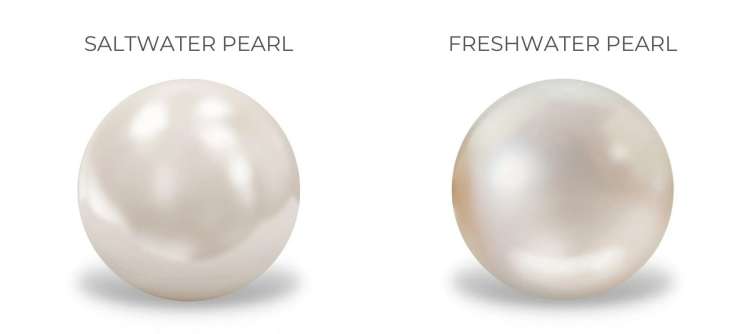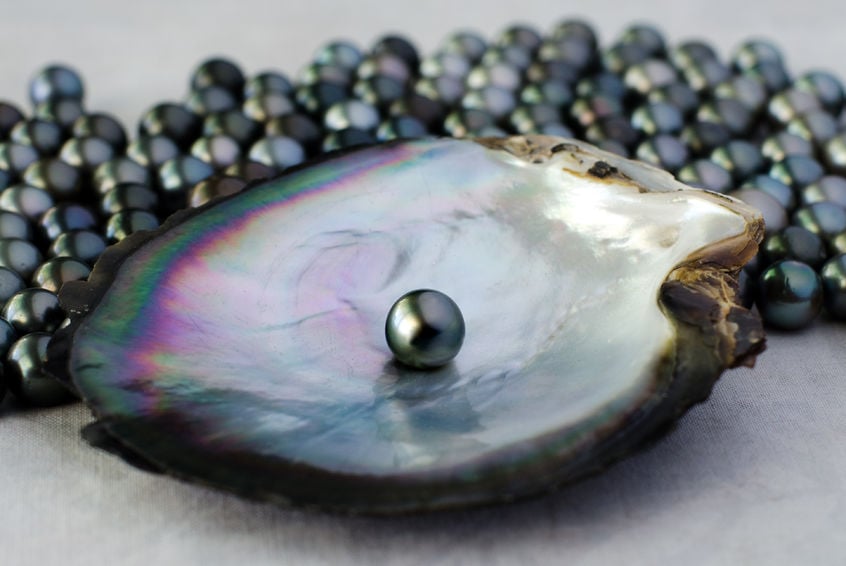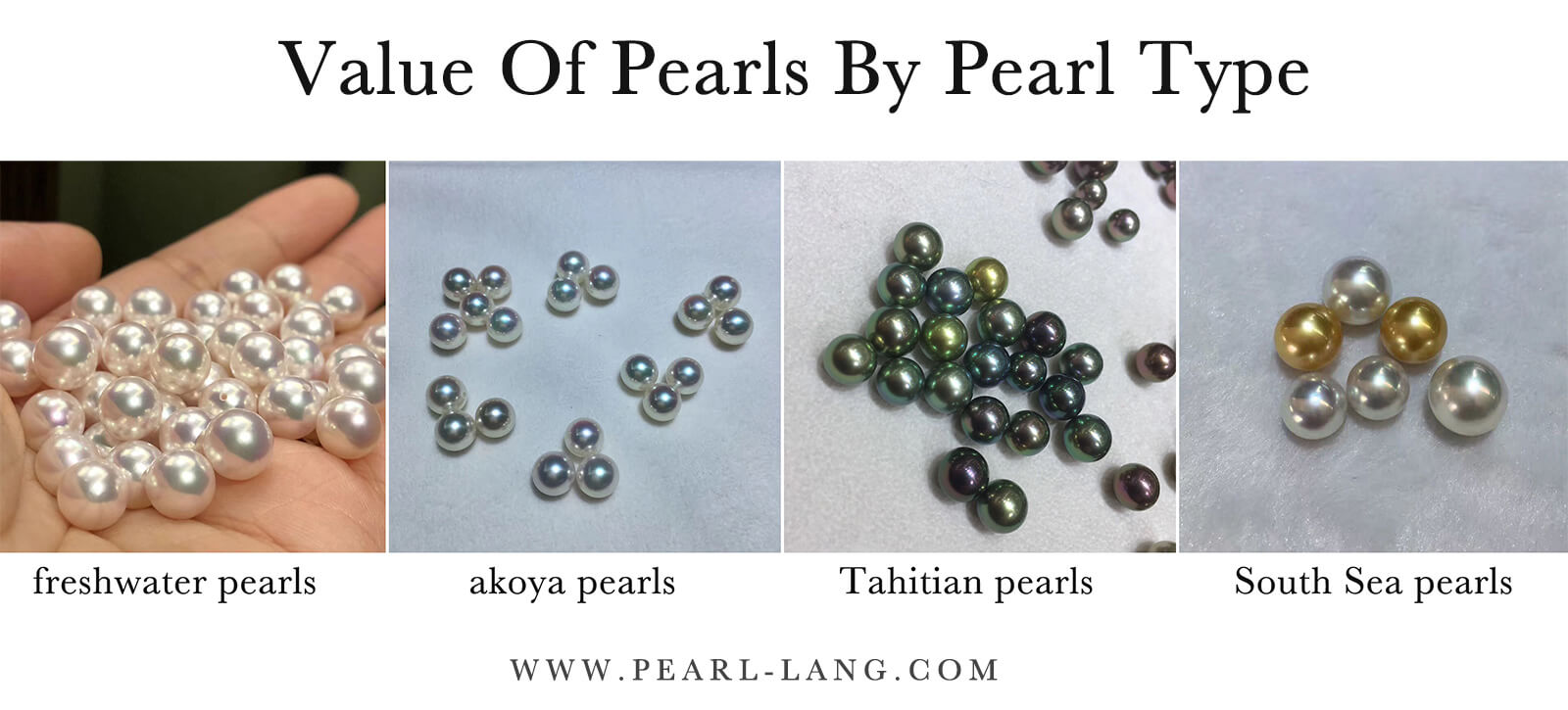Pearls are valued based on factors like size, shape, luster, and surface quality, with prices ranging from $50 to $1500 per carat. Pearls have captivated people for centuries with their timeless beauty and elegance.
These lustrous gems are formed within the soft tissue of a living shelled mollusk, such as an oyster. The value of pearls varies widely, depending on their size, shape, color, luster, surface quality, and origin. Natural pearls are extremely rare and can fetch exorbitant prices, while cultured pearls are more affordable.
From classic pearl necklaces to modern, trendy designs, pearls continue to be a symbol of luxury and sophistication. In this blog, we will explore the factors that determine the value of pearls and provide insights into their worth in today’s market.
The Allure Of Pearls
Discover the allure of pearls and unravel their worth. From classic elegance to modern chic, pearls hold timeless value. Whether natural or cultured, pearls are a symbol of sophistication and luxury.
A Glimpse Into History
In ancient times, pearls were known as the Queen of Gems and were believed to possess magical powers. The Greeks believed that pearls were the tears of the gods, while the Romans saw them as a symbol of wealth and status. In the 16th century, pearls became a fashion statement among European royalty, with many monarchs wearing them as a sign of their power.
Why Pearls Captivate Us
Pearls have a timeless quality that has fascinated people for centuries. Their lustrous beauty and rarity make them highly prized, and they are often associated with elegance, sophistication, and luxury. But it’s not just their beauty that captivates us – pearls also have a fascinating history and cultural significance. Pearls are formed inside oysters and other mollusks, making them a natural wonder. The process of pearl formation is complex and unpredictable, which adds to their allure. Pearls come in a variety of shapes, sizes, and colors, and each one is unique.
Another reason why pearls captivate us is their versatility. They can be worn in a variety of settings, from formal events to casual outings. Pearls can be incorporated into a wide range of jewelry designs, from classic pearl necklaces to modern and edgy pieces. Overall, pearls are a symbol of timeless elegance and beauty, and their allure shows no sign of fading. Whether you’re a jewelry lover or just appreciate the beauty of nature, pearls are sure to captivate you.
Types Of Pearls
Pearls come in various types like freshwater, Akoya, Tahitian, and South Sea. The value of pearls depends on factors such as size, shape, luster, surface quality, and color. High-quality pearls can range from hundreds to thousands of dollars.
When it comes to pearls, there are various types available in the market, each with its own unique characteristics and value. Understanding the different types of pearls can help you make an informed decision when purchasing or valuing these precious gems.
Freshwater Vs. Saltwater Pearls
Freshwater pearls and saltwater pearls are two main categories of pearls. Let’s explore the differences between them:
Freshwater Pearls
Freshwater pearls are formed in freshwater mollusks such as mussels. They are usually produced in freshwater lakes, rivers, and ponds. These pearls are known for their affordability and wide range of colors, shapes, and sizes. They are often irregular in shape and have a lustrous, but less intense, shine compared to saltwater pearls.
Saltwater Pearls
Saltwater pearls are formed in saltwater oysters and are generally considered more valuable than freshwater pearls. These pearls are cultivated in oceans and seas, and they have a more consistent round shape and a higher luster. Saltwater pearls are known for their classic beauty and natural elegance.
Cultured Pearls And Their Mystique
Most pearls available in the market today are cultured pearls. Cultured pearls are created through a process where a foreign object, such as a bead or tissue, is inserted into the mollusk, stimulating the pearl-forming process. This allows for controlled cultivation and ensures a higher supply of pearls compared to natural pearls. Cultured pearls offer a wide range of options, from freshwater to saltwater pearls, with varying qualities and price points. The mystique of cultured pearls lies in their ability to imitate the beauty of natural pearls, while also being more readily available and affordable.
In conclusion, understanding the different types of pearls, such as freshwater versus saltwater pearls, and the allure of cultured pearls, can help you determine their worth and make an informed decision when purchasing or valuing these exquisite gems. Whether you opt for freshwater or saltwater pearls, each type has its own unique charm and appeal, making them a timeless addition to any jewelry collection.
Factors Influencing Pearl Value
Factors influencing the value of pearls include their size, shape, color, luster, surface quality, and origin. These factors determine how much pearls are worth, with larger, rounder, and more flawless pearls being more valuable. The rarity and demand for certain types of pearls also affect their price.
Factors Influencing Pearl Value Pearls are one of the most elegant and timeless pieces of jewelry that has been adored by people for centuries. However, not all pearls are created equal. The value of a pearl depends on a variety of factors that determine its quality and rarity. In this blog post, we’ll discuss the most crucial factors that influence the value of a pearl. Size Matters The size of a pearl is one of the most apparent factors that influence its value. The larger the pearl, the more valuable it is. Pearls are measured in millimeters, and a larger pearl is considered to be more rare and valuable than a smaller one.
Larger pearls are also more challenging to cultivate, which contributes to their higher price. Shape and Symmetry The shape and symmetry of a pearl are significant in determining its value. Perfectly round pearls are the most valuable because they are the rarest. Other symmetrical shapes such as oval, teardrop, and button are also valuable but not as rare as the perfectly round ones. Irregular or misshapen pearls are less desirable and, therefore, less valuable. Luster and Surface Quality The luster of a pearl refers to its shine and reflectsivity.
How Much are Pearls Worth? Pearls with high luster are more valuable than dull ones as they appear more vibrant and captivating. Surface quality is another crucial factor in determining a pearl’s value. Pearls with smooth surfaces and fewer blemishes are more valuable than those with rough surfaces and more blemishes. Color: A Spectrum of Beauty Pearls come in various colors, ranging from white, cream, yellow, pink, silver, and black. The color of a pearl is determined by the type of mollusk that produces it and the water conditions in which it grows. Some colors are more desirable than others, and the rarity of the color also affects the pearl’s value. For example, black pearls are rare and, therefore, more valuable than white pearls.
In conclusion, the value of a pearl depends on several factors, such as size, shape, symmetry, luster, surface quality, and color. Understanding these factors can help you choose a pearl that is of high quality and value. Whether you’re buying a pearl as an investment or a gift, knowing what to look for can make all the difference.

Credit: www.whitevictoria.com
Famous Pearls And Their Stories
Pearls have captivated people for centuries with their natural beauty and timeless elegance. Beyond their aesthetic appeal, some pearls have gained fame and recognition due to their extraordinary stories and historical significance. Let’s explore the captivating tales of three famous pearls: The Hope Pearl, La Peregrina, and its journey.
The Hope Pearl
The Hope Pearl is one of the most renowned pearls in the world. It gets its name from Henry Philip Hope, a prominent gem collector who acquired it in the early 19th century. This extraordinary pearl is a large, grayish-blue natural saltwater pearl, boasting an exquisite luster that sets it apart.
The Hope Pearl’s allure is not only attributed to its size and color but also to the legends and curses associated with it. According to one story, the pearl was plucked from the eye of a Hindu idol, bringing misfortune to anyone who possessed it. This captivating narrative has only added to the pearl’s mystique and value.
Currently, the Hope Pearl is housed at the British Museum in London, where it continues to captivate visitors with its undeniable beauty and intriguing history.
La Peregrina And Its Journey
La Peregrina, meaning “The Pilgrim,” is a famous pear-shaped pearl that has traveled through the hands of numerous royals and celebrities. Its journey began when it was discovered off the coast of Panama in the 16th century.
Initially, the pearl belonged to the Spanish monarchy and adorned the crown jewels. However, it changed hands multiple times over the centuries. At one point, the pearl was even owned by Mary Tudor, Queen of England, who wore it as a pendant.
One of the most notable owners of La Peregrina was the actress Elizabeth Taylor, who received it as a gift from her then-husband, Richard Burton. Taylor cherished the pearl and often wore it as a necklace, showcasing its extraordinary beauty to the world.
Today, La Peregrina is part of a private collection, reminding us of its remarkable journey and the allure of these natural treasures.
These famous pearls, the Hope Pearl and La Peregrina, have captured the imagination of people around the world. Their stories serve as a testament to the lasting appeal and value of pearls, making them more than just exquisite gems but also bearers of history and legends.
Pearls In Fashion And Culture
Pearls have held a special place in fashion and culture for centuries. These lustrous gems have adorned the necks and wrists of royalty, symbolizing elegance, sophistication, and status. From iconic figures to modern fashion trends, pearls continue to leave a timeless mark on the world of style and tradition.
Icons And Pearls
Throughout history, pearls have been associated with iconic figures such as Cleopatra, who was known for her love of luxurious pearls. The timeless beauty of pearls has also been immortalized by renowned personalities like Audrey Hepburn and Princess Diana, who effortlessly incorporated pearls into their signature styles, cementing their status as fashion icons.
Pearls In Modern Fashion
In contemporary fashion, pearls have transitioned from traditional strands to innovative designs, making a statement in both high-end and casual wear. From classic pearl earrings to bold, modern interpretations in accessories and clothing, pearls continue to captivate the fashion world, adding a touch of elegance and charm to any ensemble.

Credit: www.thepearlsource.com
Evaluating Pearls: A Buyer’s Guide
When it comes to purchasing pearls, it’s important to understand how their value is determined. Evaluating pearls involves considering various factors that contribute to their worth. In this buyer’s guide, we will explore the grading system used to assess pearls, as well as provide insights on where and how to buy them.
Understanding The Grading System
When evaluating pearls, it’s crucial to have a good grasp of the grading system. This system takes into account several key characteristics, including size, shape, color, luster, surface quality, and nacre thickness. Each of these factors contributes to the overall value of the pearl.
The size of a pearl is measured in millimeters, with larger pearls typically commanding higher prices. Shapes can vary, from perfectly round to slightly irregular, with round pearls generally being more valuable.
The color of a pearl can range from white to black, with various shades in between. Certain colors, such as pink or gold, are considered more rare and therefore more valuable.
Luster refers to the shine and reflection of light on the pearl’s surface. Pearls with a high luster are highly coveted, as they exhibit a radiant glow.
Surface quality is another important consideration. Pearls with minimal blemishes and a smooth surface are regarded as higher quality.
Nacre thickness refers to the layers of material that make up the pearl. Thicker nacre is desirable, as it contributes to the pearl’s durability and longevity.
Where And How To Buy
When it comes to purchasing pearls, there are various options available. One common choice is to visit a reputable jewelry store that specializes in pearls. These stores often have knowledgeable staff who can assist you in selecting the right pearls based on your preferences and budget.
Another option is to explore online platforms that offer pearls for sale. However, it is essential to exercise caution and ensure that the seller is trustworthy. Look for certifications or reviews from previous customers to verify the authenticity and quality of the pearls.
It’s also worth considering attending pearl auctions or visiting pearl farms. These experiences provide firsthand insights into the pearl industry and may offer unique opportunities to acquire high-quality pearls.
Before making a purchase, it’s advisable to educate yourself about the specific type of pearls you are interested in. Research their characteristics, market prices, and reputable sellers. By doing so, you can make an informed decision and ensure that you are getting the best value for your money.
Caring For Your Pearls
Pearls are delicate gems that require special care to maintain their beauty and value over time. Proper care and maintenance can prolong the lifespan of your pearls and keep them looking lustrous for generations to come.
Storage Tips
- Store pearls in a soft pouch or wrapped in a clean cloth to prevent scratching.
- Avoid storing pearls with other jewelry to prevent scratches or damage.
- Keep pearls away from direct sunlight or heat sources to prevent discoloration.
Cleaning Do’s And Don’ts
Do wipe pearls with a soft, damp cloth after wearing to remove oils and dirt.
Don’t use harsh chemicals, abrasives, or ultrasonic cleaners on pearls as they can damage the surface.
Do have pearls professionally cleaned and restrung every few years to maintain their integrity.
Don’t wear pearls when swimming, showering, or applying cosmetics to prevent damage.
The Future Of Pearls
Pearls have a timeless allure, but their future is evolving with sustainable practices and innovative designs.
Sustainability And Cultivation
Pearl cultivation emphasizes eco-friendly practices and ethical sourcing.
Farmers are adopting sustainable methods to protect marine ecosystems.
Innovations In Pearl Jewelry
New designs blend classic elegance with modern trends.
Technological advancements enhance pearl quality and creativity in jewelry making.

Credit: www.pearl-lang.com
Frequently Asked Questions
What Factors Determine The Value Of Pearls?
Pearls’ worth is influenced by size, shape, luster, surface quality, and color. Larger, rounder, and smoother pearls with high luster and minimal blemishes command higher prices.
Are Natural Pearls More Valuable Than Cultured Pearls?
In most cases, natural pearls are more valuable due to their rarity and unique creation process. Cultured pearls are more common and affordable.
How Can I Determine The Quality Of A Pearl?
Inspect pearls for uniform shape, high luster, minimal blemishes, and rich color. Professional jewelers can provide certification and expertise in evaluating pearl quality.
Do Pearl Prices Vary Based On Type?
Yes, pearl prices differ based on the type, such as Akoya, Freshwater, Tahitian, and South Sea pearls. Each type has distinct characteristics and values.
Conclusion
The value of pearls is determined by various factors, including size, shape, luster, and surface quality. Understanding these factors can help you make informed decisions when buying or selling pearls. Whether it’s for personal adornment or investment purposes, knowing the worth of pearls is essential for making the right choices.